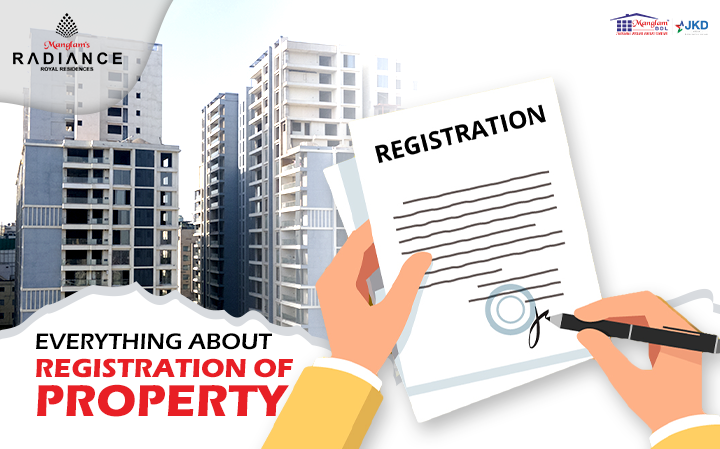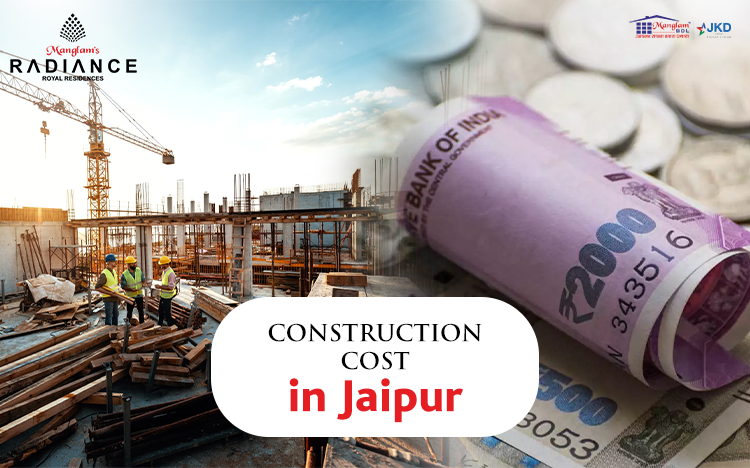Several people across the world buys and sell properties. In this procedure, there are some rules and regulations that one has to adhere to. Let’s read the blog to find out these procedures that are termed intensive by some people.
The process of registration of the property is bound by law. It states that the buyer is the owner of the house, land or office and is responsible for taking care of it.
Also, these days numerous buyers purchase properties and are given authority over them. They have to maintain it, revamp the upholstery and also get it furnished from time to time.
Let’s look into the procedure for the registration of property. This would throw light on the overview, the definition of the registry and the concept of stamp duty.
In addition to this, we will discuss the documents that are required, the property laws, the process of getting oneself registered, the time needed, the fees required, the case of non-registration and whether an online process is available to the people.
An overview
The property registration procedure involves a contract that has to be signed by both parties. The documents have to be submitted and all the legal processes have to be done with.
Moreover, the process is quite lengthy and involves paying visits to the sub-registrars. Various forms have to be filled and the stamp duties have to be paid.
The definition of a registry
This is a process in which a property is transferred from one person to the other and the transaction takes place at the office of the sub-registrar. Besides this, the person has to clear the dues and process the payment properly.
One has to be proactive in the process and know how to get the work done.
Moreover, it is a process in which the ownership changes and the transactions related to the movable and the immovable property are noted.
Essentially, the registry guarantees the present owner to be the custodian of the property. In case, a person fails to get the registry done then the previous owner is termed as the head who can exercise all the rights.
The concept of stamp duty
Stamp duty is the tax levied on the people by the government while transferring assets.
Also, government officials impose stamp duties on the legal documents that are needed in this process.
Along with this, it varies on the state and the area of location of the property. It is a legal document that is used in the courts and has to be paid in one go.
The documents that are needed
For a successful property registration, some documents are required by the person.
- One must have an Aadhaar card,
- passport-size photographs (buyers and the sellers),
- a verified copy of the original old sale deed,
- a printout of the No objection certificate that is issued under the Land ceiling act,
- a photocopy of the latest property registry card and
- copy of the municipal tax bill.
These documents ease the process of registration and provide the person with the things he/she wants.
It must be kept in mind that the original documents are not to be given but only the photocopies are to be submitted.
The property laws
The Indian Registration Act encompasses a set of laws about the property registration process. These state that one has to provide the necessary documents.
Also, these instruct the people to prevent any fraud that can take place, provide the assurance of title and keep the evidence safe.
The procedure one has to follow
The person must follow the steps to get the property registered. These steps are exhaustive but guarantee authority over the property one wishes to purchase.
Step 1 – Estimate the value of the property
The value of the property has to be calculated to decide the stamp duty. The actual price is compared to the property’s value. The higher amount is taken into consideration and the stamp duty is exercised on it.
Step 2 – Calculate the stamp duty
Several websites provide the cost of the property. As every state has a different stamp duty, the costs are calculated accordingly. One has to make an account on these websites and then see the amount that is to be paid.
Step 3 – Collecting the stamp papers
These stamp papers and stamps can be collected by the people. The stamp duties are exercised after purchasing the stamps.
Step 4 – Prepare the sale deed
The sale deed is to be typed on the stamp papers. Authorized attorneys prepare it on the behalf of the buyer. A sale deed might contain details such as the lease, sale, power of attorney and mortgage.
Step 5 – Paying the registration charges and the stamp duty
One can pay the property registration charges before the process of registration. In addition to this, the stamp duties must be paid to the collector of the stamps.
Step 6 – Taking an appointment with the sub-registrar
One has to approach the registrar’s office with two witnesses. Apart from this, the person must carry the required documents for the approval of the sub-registrar.
Step 7 – Verification of the documents
After the submission of the documents, these are verified by the people in charge. Then, the sub-registrar signs and puts a stamp on them. The witnesses who accompany the person are given some forms to fill and their identities are verified by the officials.
The sub-registrar might ask some questions and scrutinize the forms.
Step 8 – Certificate of registration
The registered documents can be collected from the sub-registrar’s office. He/She would return the original copy of the deed and keep the photocopies with him.
After the completion of all the processes, the sub-registrar issues the certificate of registration.
The time needed for the completion of the process
The registered documents should be presented within four months of the date of their release with the fee. One has to complete the process if these documents are valid.
Outdated documents will only lead to delay and might put a person behind the bars.
The fees for the registration process
The amount that one has to pay is calculated by a person’s age, gender, location, the shelf life of the property and the amenities the person has.
Let’s see the table to find out the fees in different cities:-
| City | Stamp duty charges | Registration Charges |
| Delhi | 4-6% | 1% of the property value |
| Mumbai | 3-6% | 1% of the property value |
| Jaipur | 5-6% | 1% of the property value |
| Gandhinagar | 4.9% | 1% of the property value |
The effect of non-registration of property
In case a person does not get the property registered, then the owner cannot exercise legal rights over it. Neither the present owner nor the previous one has the right to work from the property or live in it.
Apart from this, power cannot be given to anyone in this scenario. The person has to undergo the legal processes and has to face the music.
In a span of some months, he/she must complete the process. It is advised to adhere to the rules and complete all the formalities before anyone could point a finger or find loopholes.
Failing to get the registration process right might result in legal action against a person. He/She might be put behind the jurisdiction for some time till the person doesn’t make amends.
The process of online registration
There is websites aplenty that offer online registration. One has to enter the details, date of execution, information about the sales deed, and the number of parties, provide the ID proofs and assess the property value.
You can click on this link to register your property online
Besides this, the form can be downloaded and can be filled in accordingly by the people. This feature has helped numerous customers across India and has eased the process of property registration.
Apart from this, it has reduced paperwork and provided people with reliable methods to get the registration done.
To sum it up, the process of property registration is quite long. One has to undergo several processes to get the property. Though some laws have become lenient, the process is quite extensive. A person has to be prepared with all the documents. Legal action can be taken against a person who is unable to register the property.
A person has to be prepared with the things beforehand and must be proactive in the procedure involved. The feature of online registration has reduced paperwork and the long queues before the sub-registrar’s office.
Also, Read – Construction Cost in Jaipur per Sq.Ft.
Now, if you understand the procedure of property registration and you decided to buy a luxury property then check out the properties of Mangalam Radiance.
Manglam Radiance is a premium luxury residential project located near Tonk Road, Jaipur. It offers 2/3/4/5 BHK luxury apartments in the heart of Jaipur City.
We are one of the best options to check out. Submit your query or Contact us and schedule your visit today.





